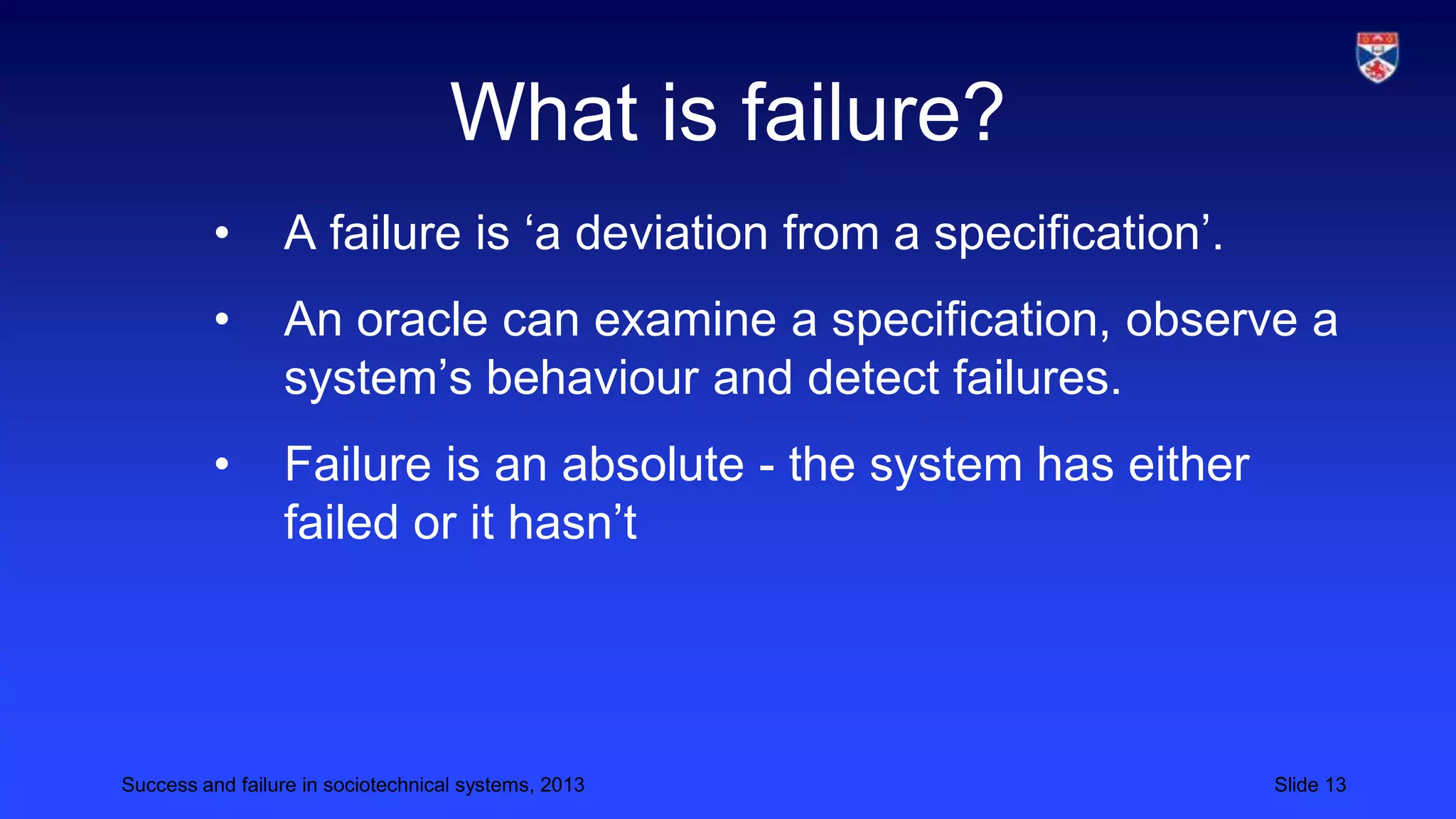The document discusses how success and failure in sociotechnical systems are subjective and depend on the perspective of the observer. It notes that sociotechnical systems are non-deterministic due to human factors and system changes over time. Different stakeholders may have conflicting views of what constitutes success or failure based on their goals. The document concludes that failures are normal and inevitable in complex systems due to technical limitations and differing stakeholder perspectives.


























